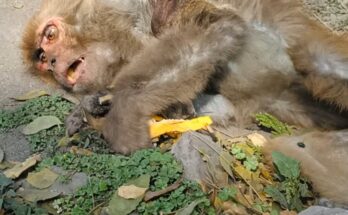Hidden deep within the mangrove forests and riverbanks of Borneo lives one of nature’s most bizarre and captivating creatures — the proboscis monkey. Known for its enormous, bulbous nose and pot-bellied figure, this primate often draws laughter from human onlookers. But beyond its comical appearance lies a mysterious and fascinating world.
The proboscis monkey’s oversized nose, most prominent in males, is thought to help amplify vocalizations, making it easier to attract mates and assert dominance. It flaps and jiggles when the monkey calls out, giving the impression of a clownish performance. But make no mistake — these monkeys are finely tuned to their swampy environment. With webbed feet and strong swimming skills, they are expert river-crossers, often leaping from tree branches directly into the water below to escape predators or reach new feeding grounds.
Living in small, tight-knit groups, proboscis monkeys have a strong social structure. Males often preside over harems of females and their young, keeping a watchful eye from the treetops. Their diet consists mainly of leaves, fruits, and seeds, and their large bellies are specially adapted to digest tough plant matter through a complex, multi-chambered stomach.
Despite their charm, proboscis monkeys are under threat. Habitat loss from logging, palm oil plantations, and human encroachment continues to shrink their natural range. They are now classified as endangered, their population dwindling year by year.
To many, the proboscis monkey might look like nature’s clown — all nose and belly, with an awkward gait and goofy expression. But those who look closer will find a creature of quiet intelligence, remarkable adaptation, and deep emotional bonds. In their mystery and humor, proboscis monkeys remind us how diverse and surprising the natural world can truly be.
Would you like a fun infographic or illustration to go with this?


